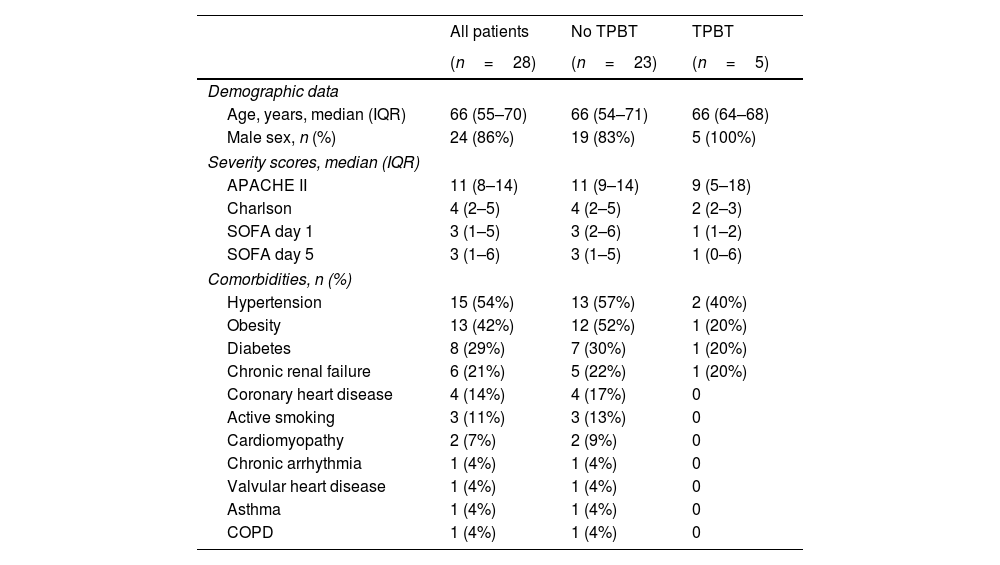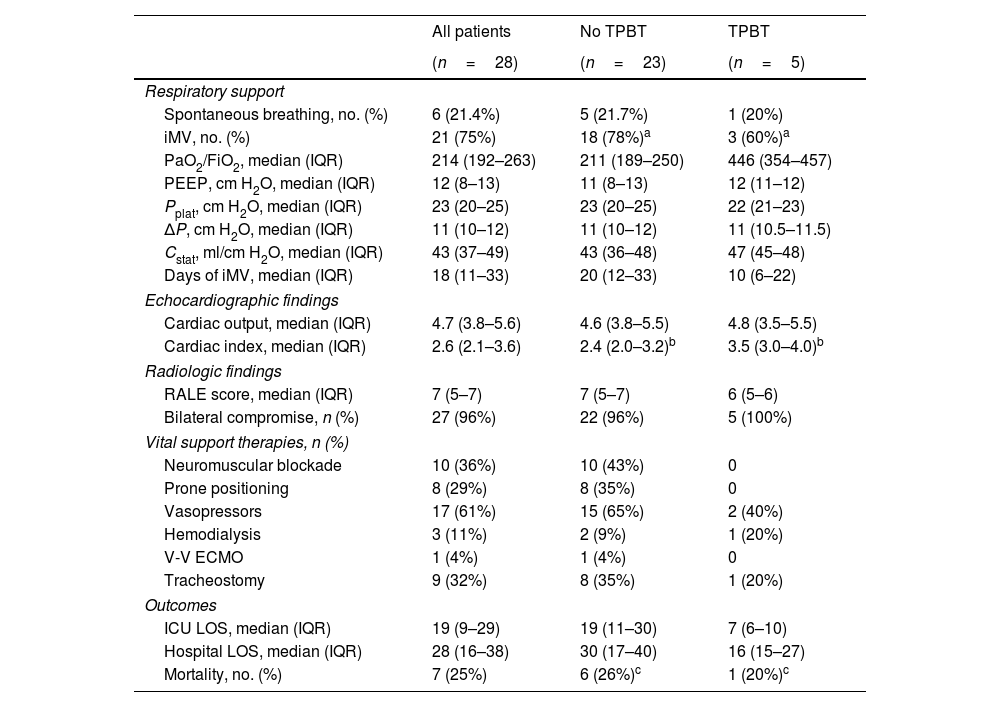Transpulmonary bubble transit (TPBT) detected with contrast echocardiography is reported as a sign of intrapulmonary arteriovenous shunt. However, its pathological meaning is not clear during coronavirus-2019 disease (COVID-19) related acute respiratory distress syndrome (ARDS). Our aim was to determine the prevalence and clinical significance of TPBT detection during COVID-19 related ARDS.
MethodsWe carried out a prospective observational study performed in a high complexity intensive care unit from Argentina. Patients with COVID-19 related ARDS underwent transthoracic echocardiography with saline contrast. Moderate-to-large TPBT was defined as right-to-left passage of at least twelve bubbles to left chambers after at least three cardiac cycles and complete opacification of the right atrium.
ResultsWe analyzed the results of 28 patients (24 men and 4 women). Seventy-five percent of the patients received invasive mechanical ventilation. Moderate-to-large TPBT was detected in 1 patient (3.5%). Among the 27 patients without significant TPBT, 23 had no TPBT and 4 had a minor TPBT. TPBT was not associated with invasive mechanical ventilation requirement (p=0.5737) nor in-hospital mortality (p=1).
ConclusionsTPBT was not associated with severe hypoxemia or invasive mechanical ventilation requirement, although more studies are needed to further clarify its contributing role in COVID-19 hypoxemia.
El tránsito transpulmonar de burbujas (TTPB) detectado con ecocardiografía de contraste se reporta como un signo de cortocircuito arteriovenoso intrapulmonar. Sin embargo, su significado patológico no está claro durante el síndrome de dificultad respiratoria aguda (SDRA) secundario a enfermedad por coronavirus-2019 (COVID-19). Nuestro objetivo fue determinar la prevalencia y la importancia clínica de la detección de TTPB durante el SDRA por COVID-19.
MétodosEstudio observacional prospectivo realizado en una unidad de cuidados intensivos de alta complejidad de Argentina. Los pacientes con SDRA por COVID-19 se sometieron a una ecocardiografía transtorácica con contraste salino. El TTPB moderado a grande se definió como el paso de derecha a izquierda de al menos doce burbujas aéreas a las cavidades cardíacas izquierdas después de al menos tres ciclos cardíacos con opacificación completa de la aurícula derecha.
ResultadosSe analizaron los resultados de 28 pacientes (24 hombres y 4 mujeres). El 75% de los pacientes recibieron ventilación mecánica invasiva. Se detectó TTPB moderado a grande en un paciente (3,5%). Entre los 27 pacientes sin TTPB significativo, 23 no tenían TTPB y 4 tenían un TTPB menor. El TTPB no se asoció con la necesidad de ventilación mecánica invasiva (p=0,5737) ni con la mortalidad hospitalaria (p=1).
ConclusionesEl TTPB no se asoció con hipoxemia grave o necesidad de ventilación mecánica invasiva, aunque se necesitan más estudios para aclarar el papel contributivo en la hipoxemia por COVID-19.
Article
Socios de la Asociación de Medicina Crítica y Cuidado Intensivo
Para acceder a la revista
Es necesario que lo haga desde la zona privada de la web de la AMCI, clique aquí











